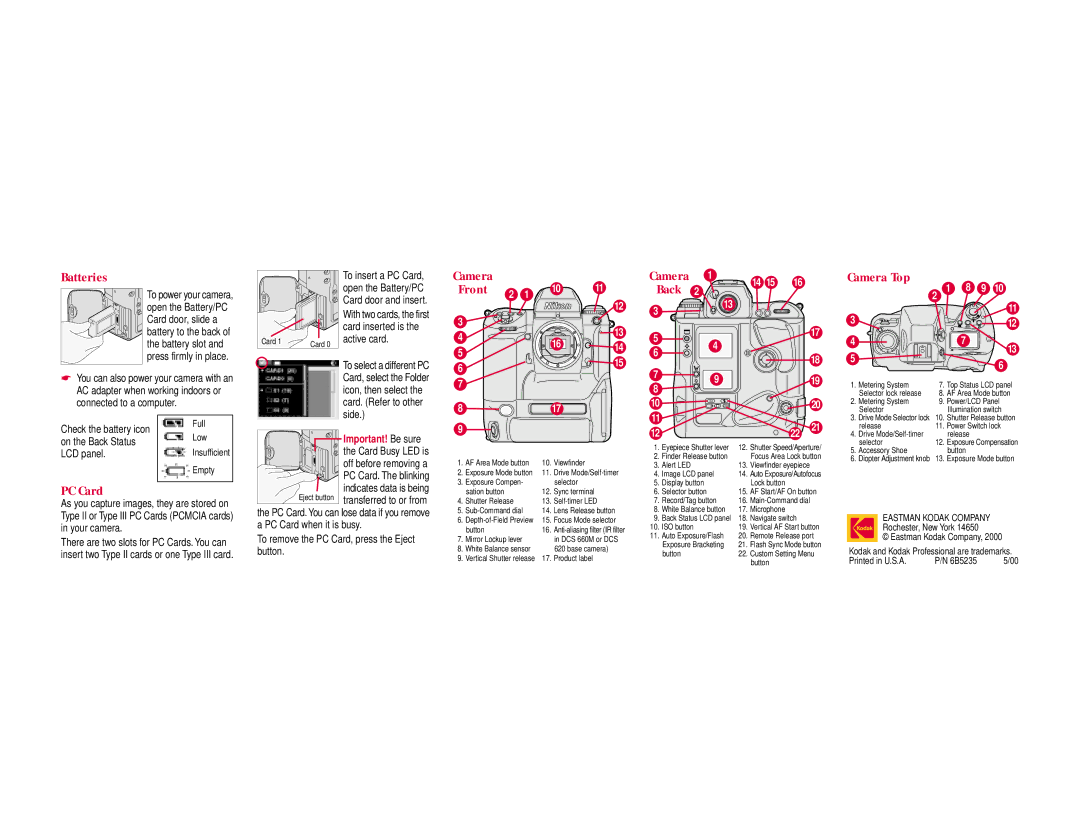DCS 600 Series specifications
The Kodak DCS 600 Series, launched in the mid-1990s, marked a significant milestone in the evolution of digital photography. As a pioneer in the realm of professional digital cameras, the DCS 600 Series combined advanced technologies with the practical features needed for high-quality image capture.One of the standout characteristics of the Kodak DCS 600 Series was its innovative use of a 1.5-megapixel sensor based on the Nikon F5 camera body, enabling photographers to achieve a high level of detail and image quality that was still uncommon at the time. The camera utilized a charge-coupled device (CCD) sensor, a technology that allowed for improved light sensitivity and color reproduction, making it particularly effective for studio and event photography.
The DCS 600 Series came with several models, including the DCS 620 and the DCS 660, each providing slightly different features tailored to various user needs. Key features included a built-in image processing engine that accelerated the workflow of capturing, editing, and storing images. It supported a range of ISO settings, allowing for adaptability in diverse lighting conditions, catering to both bright studio environments and low-light situations.
Another impressive aspect of the DCS 600 Series was its ability to capture JPEG images alongside RAW files, providing photographers with flexibility in post-processing. The inclusion of professional-grade lenses also ensured that users could achieve stunning results, while the camera's durable construction provided reliability for fieldwork.
Connectivity options were also ahead of its time, with the DCS 600 Series enabling photographers to transfer images quickly via serial communication. This feature was crucial for professionals who needed to send images to clients or publications swiftly.
In summary, the Kodak DCS 600 Series represented a critical juncture in the transition from film to digital photography. With its high-quality sensor, advanced processing capabilities, and robust features designed for professional use, the DCS 600 Series laid the groundwork for future digital camera developments and left a lasting legacy in the world of photography. Its impact is still felt today as it paved the way for the modern digital imaging solutions that continue to evolve.

